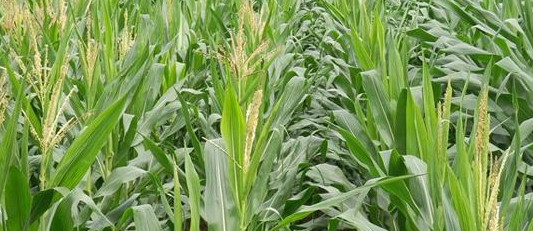The corn flower grain period refers to the period from the tassel to the maturity. In the first half (traction to grain formation), the center of flowering and fertilization is centered, and the second half (the grain formation to the maturity stage) is centered on the weight of the grain. The central center leaf is the middle and upper leaves of the plant. The characteristics of fertility at this stage are: the vegetative body stops growing, and enters the period of reproductive growth as the center. After flowering and fertilization into the stage of grain yield formation, it is an important period to determine the number of grains and grain weight. To this end, the central task of field management at this stage is to protect the leaves, increase the photosynthesis intensity, promote the grain and grain weight, and achieve high yield. The main measures for field management are: 1 to apply grain fertilizer. During the period from the tasseling to the flowering stage, 20% of the total amount of nitrogen fertilizer was applied to the high-yield fields, and 9 kg of urea was recovered. 2 drought prevention and drainage. After the tasseling, the ground should be kept moist. Pay attention to the timely watering due to the sputum preparation, and promote the roots to protect the roots and increase the grain weight. If the water in the field should be drained in time. 3 pest control. In this period, there are mainly corn mites, armyworms, cotton bollworms, mites and other hazards, which can be controlled by 2.5% enemy killing 1000 times liquid or 50% phoxim 1500 times liquid. 4 go to the male to cut the male. When the tassel has just been extracted and has not yet bloomed, remove 1 row of tassels every 1 row to save nutrients, water, reduce plant height, reduce pests, improve light, and pay attention to the ground, do not go to the ground, so as not to affect pollination . After pollination, all the tassels can be cut off to increase the group illumination. 5 shallow cultivating. After grouting, it can be shallow 1-2 times, the plate is ventilated to increase temperature, prevent premature aging, premature ripening and heavy granulation. 6 timely harvest. Generally, when the loquat leaves are dry and loose, the kernels become hard and shiny, the grain milk line disappears, and the black layer appears at the base, which is the ripening period, and the harvest yield is highest at this time. The results are often used to detect disease. Gastric acidity pH is 3.5 ~ 7.0, common in atrophic gastritis, gastric cancer, secondary iron deficiency anemia, gastric dilatation, hyperthyroidism. Reduced gastric acidity is seen in duodenal reflux, gastric ulcer, gastric cancer, atrophic gastritis, chronic gastritis, pernicious anemia, etc. Such as duodenal bulb ulcer, Zhu-Ai syndrome, pyloric obstruction, chronic cholecystitis, duodenal fluid reflux will also increase pH. Gastric Acid Ph Test Strips,Gastric Acid Strips,Gastric Acid Test Strips,Gastric Acid Ph Strips,Gastric Acid Ph Test Kits,Gastric Acid Ph Test Paper Changchun LYZ Technology Co., Ltd , https://www.lyzinstruments.com
normal
PH0.9 ~ 1.8.
Clinical significance of test results
(1) Gastric acid reduction: pH3.5 ~ 7.0, common in atrophic gastritis, gastric cancer, secondary iron deficiency anemia, gastric dilatation, hyperthyroidism. Reduced gastric acidity is seen in duodenal reflux, gastric ulcer, gastric cancer, atrophic gastritis, chronic gastritis, pernicious anemia, etc.
(2) Increased gastric acidity: in duodenal bulb ulcer, Zhuo-Ai syndrome, pyloric obstruction, chronic cholecystitis, duodenal fluid reflux will also increase pH.
Corn flower grain management measures
Prev Article
Pregnant women can not eat crabs